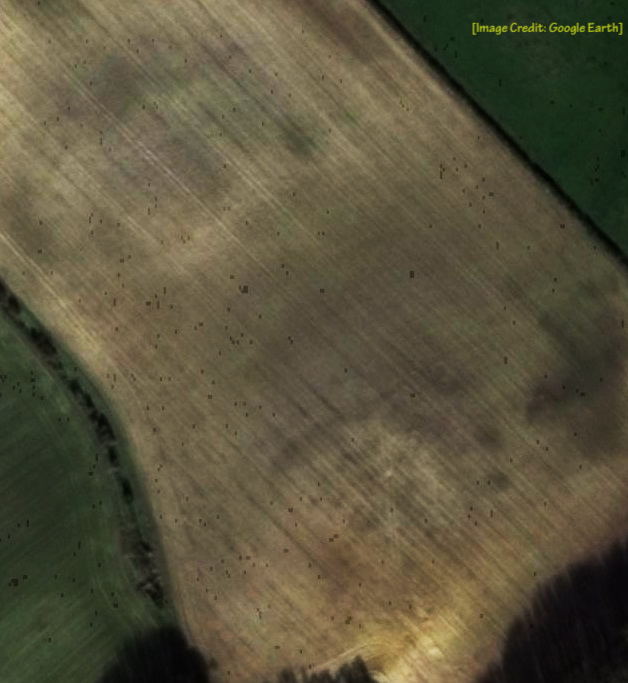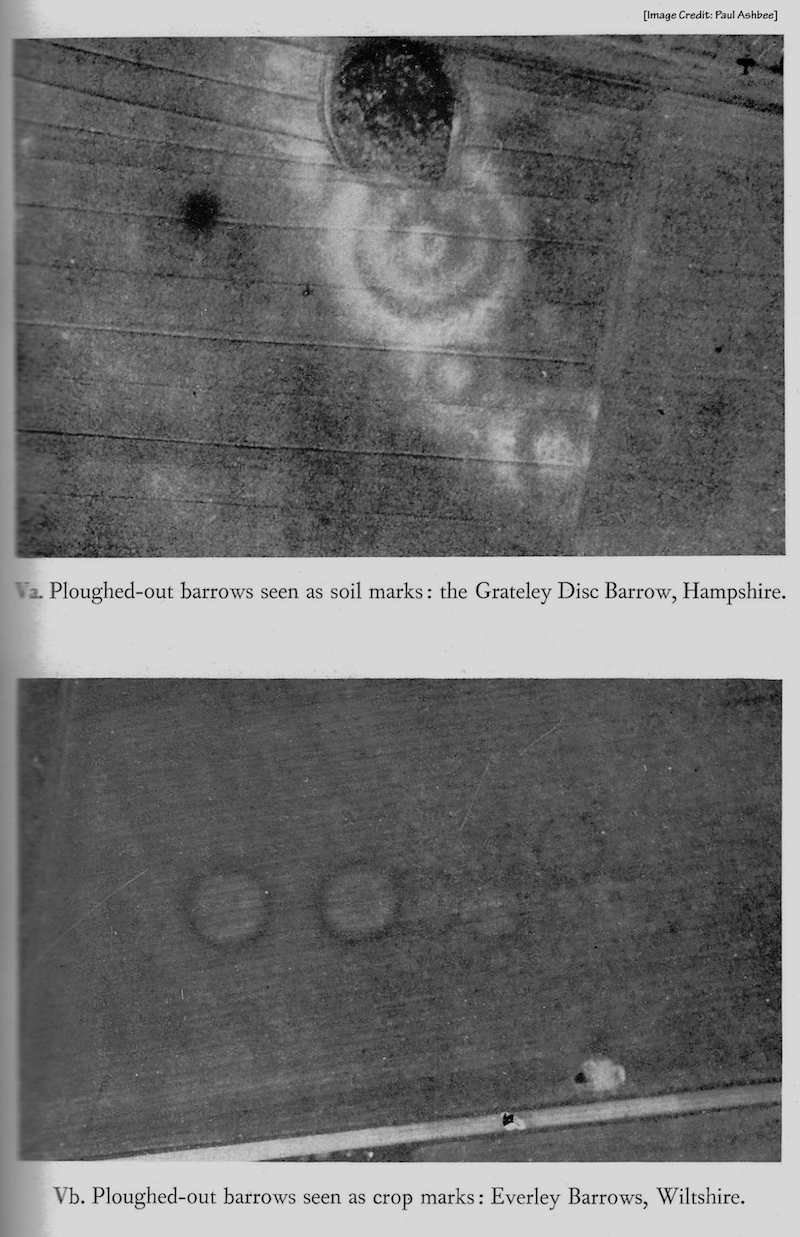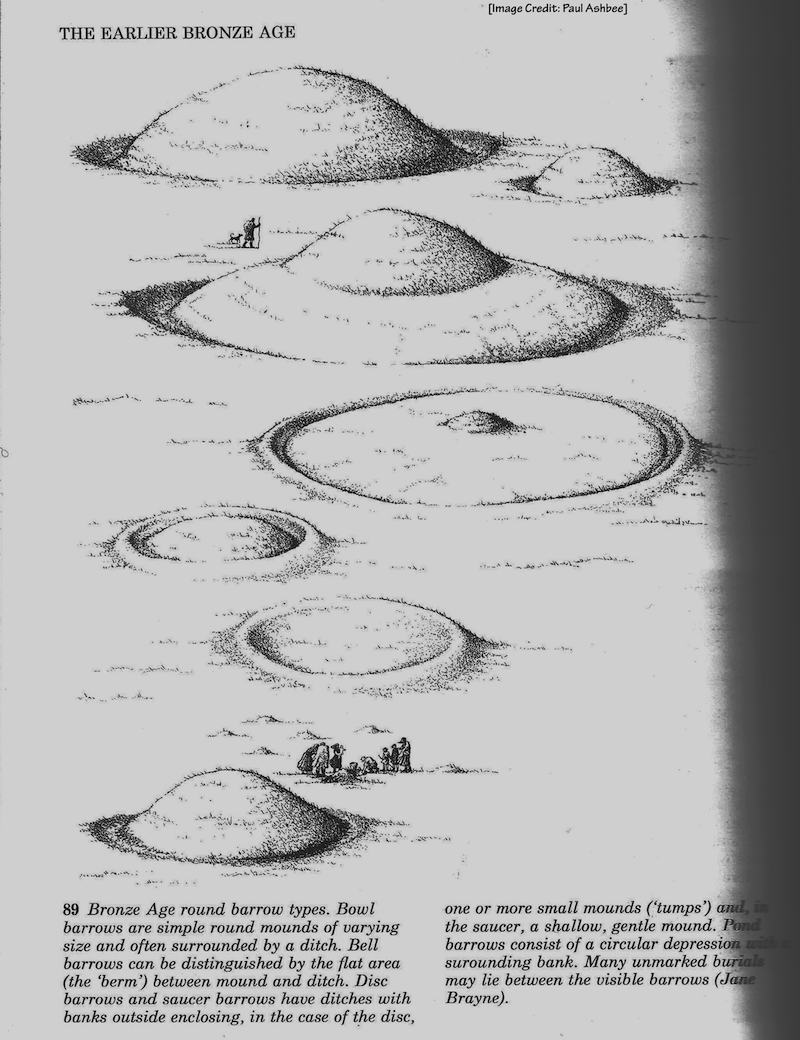Last Update: 20th August 2019
This is the "Garsington Ridge" Projects page for the Horspath Archaeology & History Group.
Garsington Ridge Project
[Posted 20th August 2019]
The following article was composed (mainly) by Chris Pym and explains the significance of some circular crop or soil-marks found along the Garsington Ridge.
Horspath's First Farmers?
New evidence of late Neolithic or Bronze Age farmers in the Horspath - Garsington Area
Very recently Geoff Roynon, using Google Earth Pro, spotted some curious circular crop or soil-marks along the Horspath-Garsington ridge.

Possible Bronze Age Barrow cropmarks
We then began comparing these crop/soil-marks with others in our files. After eliminating obvious spurious sources for these - WW2 Ack-Ack or searchlight batteries, fungal fairy rings and agricultural spraying etc. - we came to the tentative conclusion that the former were Late Neolithic or Bronze Age barrows.
However later and closer scrutiny of the main circle seemed to show an entrance gap at the four o'clock position, hence another interpretation could be that of a Henge monument, or even a large dwelling. Better aerial coverage is badly needed and we may have to think about buying a good drone to extract the best possible data from aerial covers.
A small test pit (with permission) at the four o'clock position might well show clear evidence of a doorway, but for the time being the question remains open.
(Further information about these barrows will be found in the "Reports" section of this site under "Garsington Ridgeway Report".)
We think that the latter circles near Old Horsepath Farm were of the same era and we shall do some test pits to see if they are marks left by hut foundations, or ring-ditches from burial mounds from that period.
However, we do need to be cautious in assigning specific dates to these crop and soil marks as there is much turmoil in professional archaeological circles over dating these, with arguments batting to and fro about the overlap of Neolithic and Bronze Ages (see last paragraph below).
The images below for comparison are from Paul Ashbee's "The Bronze Age Round Barrow in Britain" Phoenix House, 1960.

Example of Barrow crop-marks
The similarities are fairly obvious.
Another illustration from Ashbee's book shows the various types of barrows:

Example of Barrow types
The question then is, who were these people? A good explanation was offered by a recent very large-scale aDNA (ancient DNA) study: Ancient DNA Study
For a fuller account see: Bell Beaker Complex DNA Study
From this, it seems that those "Beaker" people and their descendants who eventually settled in southern Britain, probably originated in the Friesland region of the Northern Netherlands.
Thus it now seems that some four thousand years ago, a wave of genetically distinct migrants arrived in Britain from the European mainland. (Where they came from originally is still a matter for intense debate!).
But they brought revolutionary changes (or gradual) according to varying interpretation of the excavated details, in food production techniques and, over time, gradually displaced the Mesolithic foragers (Hunter-Gatherers), who had thinly populated these islands since the ice tundra retreated after about 10,000 BC. From the aDNA analysis we can clearly see that there was little intermarrying between the Beaker People and the aboriginal Hunter Gatherers. Thus the latter peoples finally becoming extinct by the middle of the Bronze Age.
Note: we have already found several dense scatters of flint-working debris from their camping sites around Horspath: at the site of Old Horsepath; the field close to the Cuddesdon Turn and on the Horspath Allotments. See the paper on Old Horspath in the Documents part of this website on page 22. Also a large area of Mesolithic flint-working was discovered during the surveying of the new BMW sports field. The Hunter-Gatherers' life-style was broadly similar to that of some of the pre colonial Native Americans: highly mobile tribal groups who slowly moved on over a very wide area as the local resources became exhausted; returning to their starting point (base camp) after several years, by which time the previously exhausted resources would have had time to naturally regenerate: both flora and fauna.
However, these new arrivals to Britain (Beaker People - from the shape of drinking pots found in their graves), were farmers and stockbreeders. Even around Horspath and Garsington we can see faint traces of their field systems. Today, we still have the same basic agricultural practises: a four thousand year old tradition, albeit today with machines dominating the work.
As to their domesticated livestock and therefore a large part of their diet, an excellent modern internet source is: Animal Remains from the Early Neolithic
(See pages 13 and 14 of this report for the domestication of cattle, pigs & goats)
Although from the Fen country, the truly amazing preservation of one Bronze Age village at Must Farm shows how brilliantly advanced they were in wood-working, metal working and textiles: How we lived in Bronze Age Britain
Finally, a caveat as to archaeological terminology: The labels still in general media use today have become very dated, if not highly misleading.
They are based on Christian Thomsen's attempts in 1836 to classify the vast archaeological content of the National Museum of Denmark in Copenhagen according to whether the artefacts were made of Stone, Bronze or Iron. He claimed that these three groupings represented three chronologically successive archaeological Ages. This was the genesis of the "Three-Age System" which has served in the past but is now simply confusing.
The main problem being that it implied a different "Age" dawned with the introduction of different tool materials! And frequently it implied immigrant invasions, so beloved of prewar archaeologists.
The reality is that in most cases the change of tools meant just that: but the people themselves remained the same. The same sort of problems occur when pottery styles change: is it just a new fashion? Or is it a wave of invaders bringing their own products?
For instance; at the end of the Roman period in Britain around AD 400 we see new (and vastly different) potting and brooch styles made in the Anglo-Saxon manner. But there is increasing evidence that these artefacts were simply being produced by British potters and metal entrepreneurs to meet the demands of a new and probably small market. (One of our group members - Jemma Underdown - is researching this area in ceramics for her PhD.)
If we categorised our modern populations by what they used or wore, the risible reaction to the Smart-phone People; the Laptop People or the Miniskirt People would be deafening!
In fact flint tools were still being made in the late Bronze Age: and I have used a Mesolithic flint knife to successfully skin a roe deer. In fact it was far better tool than any modern knife due to its shape and handling characteristics...